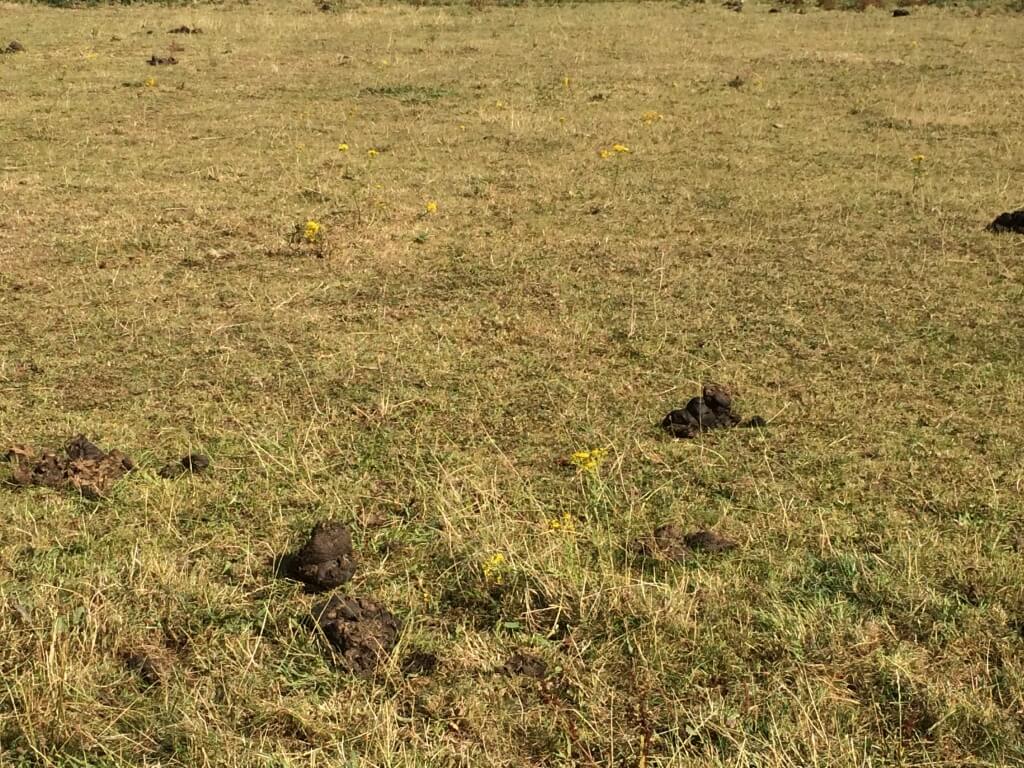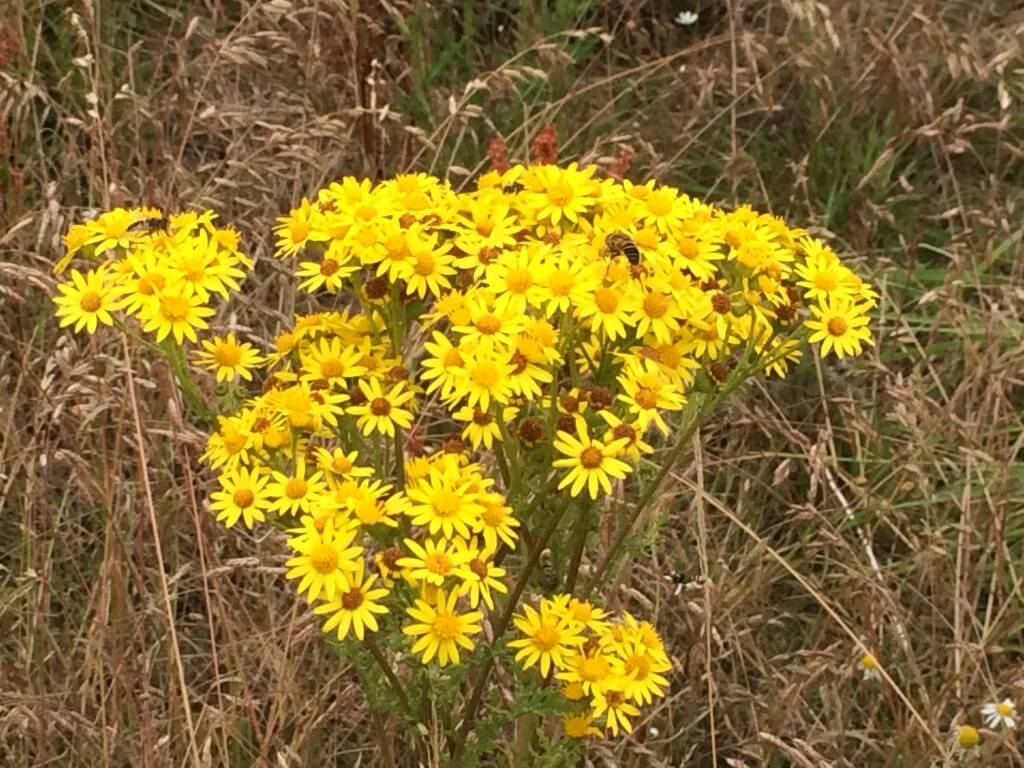Ragwort The Horse Killer or …
Horses grazing in fields full of Ragwort made me think.
My sister rides at a stables where neighbouring paddocks are a sea of Ragwort. I always thought it was deadly to horses, so I decided to investigate. A simple Internet search reveals plenty of articles ranging from the hysterical “all the horses are going to die” (a Daily Mail example) to the more laissez fair “horses don’t eat it and it’s good for insects” (see Buglife). I guess the truth must be somewhere in between.
There is a Ragwort Control Act 2003, which suggests that Ragwort must be a problem of some sort. Most of the literature agrees that the Common Ragwort (Senecio jacobaea or Jacobaea vulgaris) contains chemicals that, if ingested in big enough quantities, can be harmful to most mammals.
The chemicals in question are pyrrolizidine alkaloids, which are initially digested in the intestine and then converted to toxins in the liver. These alkaloid toxins kill liver cells but are eliminated from the body within a couple of days. The toxins themselves are not cumulative but the damage they do to the liver is. The problem with liver damage is that it is generally symptomless until too much (possibly 80%) of the liver has already been destroyed. So when the symptoms appear it is probably too late.
Horses are observed grazing in fields with Ragwort and appear to avoid it. It is thought that the bitter taste puts them off when there are tastier alternatives. Problems are said to occur when the pasture is very lean and a horse might then resort to chewing on the bitter stuff. But look at this picture – how do horses avoid all those little plants? It looks a bit dangerous to me.
More importantly, Ragwort that dies and dries, loses its bitterness but does not lose the poisonous alkaloids. Most ragwort poisoning probably occurs because of the incorporation of Ragwort into hay, haylage and silage. It is thought that a lethal dose for a horse might be between 5% and 25% of its bodyweight. For a 700kg horse this is 35kg to 175kg, which is more than a small trace in its hay. They would have to be fed a lot of really contaminated hay or slightly contaminated hay over a very long period.
Never-the-less the UK government has issued advice on the control of Ragwort, which can be summarised as follows:
- Within 50m of a pasture the ragwort should be removed*
- Between 50 and 100m of a pasture a ragwort control program* should be implemented
- Over 100m from a pasture don’t worry!
*It is not within the scope of this short article to discuss control and removal methods – but, as with all things, it is predictably not a simple matter. It is certainly better to prevent an infestation than to try to deal with one. And to this end pastures must be well managed to make the ground difficult for ragwort seeds to germinate in.
Ragwort also has a good side as point 3 implies. It is native to the UK and, in fact, most of the temperate world. In England it is home to and food for over 70 species of insect and at least 30 insects and 14 fungi are wholly dependent on it. It is also apparently a vital provider of nectar between July and October to over 100 species of insect and here’s proof that at least a couple of insects enjoy it!
To keep things in perspective this link is a list of about 100 plants that are poisonous to horses. Ragwort is just one amongst many.
If you are interested I have complied a short bibliography of Ragwort “factual” related publications:
Ragwort, myths and facts
Ragwort Facts
The British Horse Society
Defra
Donkey Sanctuary
Royal Horticultural Society
Wikipedia
Some Press on Ragwort:
Horse & Hound
Hansard A Speech by Owen Patterson MP at 3.12am – bet that was well attended!
The Western Morning News
The Telegraph
Bug Life






